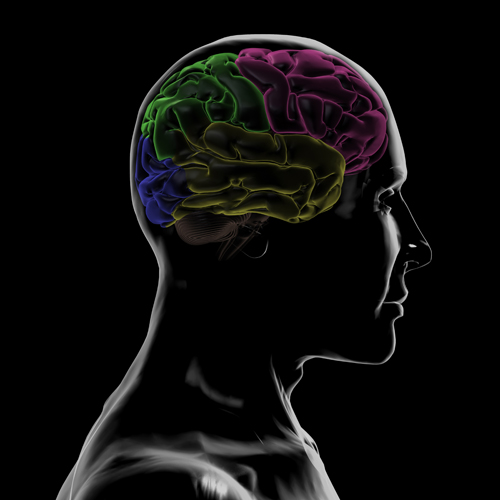As the primary center for regulation of body controls, sensory interpretation, transmission of information to all muscles and organs, consciousness, thought, emotion, and memories, to say the brain is essential to life is, perhaps, the world’s biggest understatement. But, while all parts of the brain are important, some parts may be more so than others. One of those most vital is the frontal lobe.
The Lobes of the Brain
The brain is composed of four lobes:
Parietal Lobe: This portion of the brain is located behind the central sulcus (a fold in the cerebral cortex) and is responsible for the perception of stimuli like pressure, temperature, pain, and touch.
Temporal Lobe: This portion of the brain is located below the lateral fissure (a fold that helps separate the frontal, temporal, and parietal lobes) and is responsible for perception and recognition of auditory stimuli (such as noises and voices) as well as memory.
Occipital Lobe: This portion of the brain is located in the back of the brain and is responsible for most aspects of vision.
Frontal Lobe: This portion of the brain is located in front of the central sulcus and is responsible for reasoning, planning, parts of speech, certain movement, emotions, and problem solving.
The Importance of the Frontal Lobe
As demonstrated by its intellectual responsibilities, the frontal lobe is perhaps the most important part of the brain; this is particularly true in regards to intelligence.
According to Psychology Today, the frontal lobe essentially gives a person the ability to think and do almost all the things that come with thinking. The frontal lobe is responsible for (just to name a few) giving students the ability to solve math problems; giving adults the ability to perform at work; and helping people make even the most minimal decisions, such as what type of yogurt to buy.
The frontal lobe doesn’t always do this on its own; rather, it serves as the command center of the brain, often relaying information to other parts of the brain and forming connections to help the brain work as a cohesive and competent unit.
The Frontal Lobe in Development
The frontal lobe is the cornerstone of human development. Not only does it give us the ability to perform voluntary actions (such as talking and walking), it also controls involuntary actions (including emotions and personality development).
For babies, the frontal lobe is hard at work during the very first year, typically between six months and a year. It is during this time that the left side begins to control language while the right side begins to respond to music, visual memories, and spatial intelligence.
As a child grow and develops, the frontal lobe (as well as the entire brain) continues to develop further. However, the frontal lobe may not be fully developed as early as once believed.
It was once assumed that the frontal lobe was done developing by age 18 or even earlier. But a National Institutes of Health study proposed that the frontal lobe isn’t truly developed until age 25. In fact, adolescence is a time when the frontal lobe undergoes dramatic changes, perhaps compromising its true ability even more.
Numerous studies appear to attest to this as well, providing an answer for why teenagers and young adults often appear to make such poor decisions. With the frontal lobe not fully developed, they are hindered in their ability to think, assess risk, and reason. They are also more likely to act on immature impulses and more likely to become addicted to drugs and alcohol.
Byline
Werner Garrett is a freelance writer who focuses on complex legal issues such as Traumatic Brain Injuries, Health Law, Personal Injury, Criminal Defense and others as well.
Image credit goes to Pete Cruickshank.

